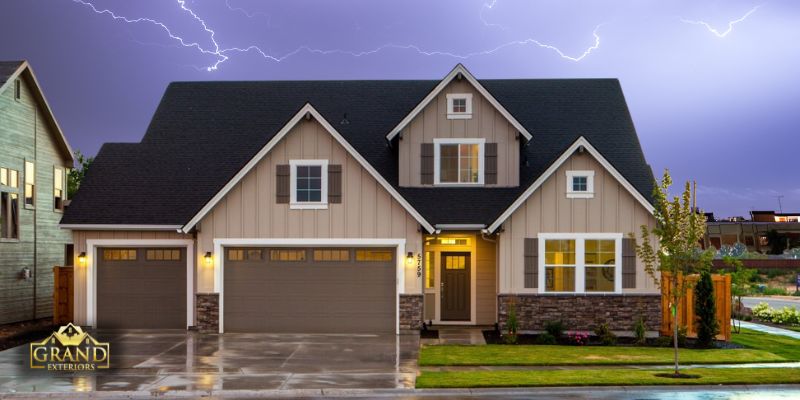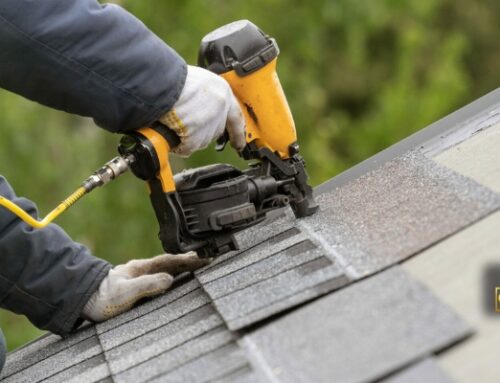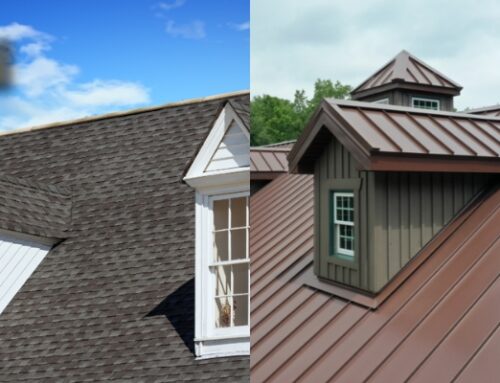Storms, whether they be hurricanes, tornadoes, or severe thunderstorms, can wreak havoc on residential properties, with one of the most vulnerable components being the roof. The aftermath of a storm often leaves homeowners grappling with the challenge of assessing and addressing roof damage. Understanding the effects of storm damage on residential roofing is crucial for timely and effective repairs, ensuring the long-term integrity of the home.
Common Types of Storm Damage:
Wind Damage:
- Strong winds during storms can lift and peel off shingles, leaving the underlying structure exposed. This type of damage compromises the roof’s ability to protect the home from water infiltration, ultimately leading to leaks.
Hail Damage:
- Hailstones can cause significant damage to roofing materials. They may create dents or punctures in shingles, weaken their structural integrity, and reduce their lifespan. In severe cases, hail damage can expose the roof to water damage.
Water Damage:
- Storms often bring heavy rainfall, leading to potential water damage. Water can seep through compromised areas, causing leaks, rot, and structural damage. Identifying and repairing water damage promptly is crucial to prevent further deterioration.
Debris Impact:
- Flying debris, such as tree branches or other objects carried by the wind, can cause direct impact damage to the roof. This may result in broken or displaced shingles, punctures, or even structural damage.
Assessment Process:
Exterior Inspection:
- Start by visually inspecting the exterior of the roof. Look for missing or damaged shingles, dents, and punctures. Check for signs of granule loss on asphalt shingles, as this indicates potential damage.
Gutter Inspection:
- Examine the gutters for accumulated debris, which may have been dislodged during the storm. Clogged gutters can contribute to water pooling on the roof, increasing the risk of leaks.
Attic Inspection:
- Conduct a thorough inspection of the attic space for signs of leaks, water stains, or mold growth. These indicators suggest that water has penetrated the roof and insulation.
Professional Inspection:
- While homeowners can perform a preliminary assessment, it is advisable to seek the expertise of a professional roofing contractor. Professionals can identify hidden or subtle damage that may not be immediately apparent.
Immediate Repairs and Preventive Measures:
Temporary Fixes:
- In cases of severe damage, it is essential to undertake temporary repairs to prevent further water infiltration. This may involve using tarps or sealants to cover exposed areas until permanent repairs can be made.
Prompt Repairs:
- Addressing storm damage promptly is crucial to prevent secondary issues like mold growth and structural damage. Schedule repairs with a qualified roofing contractor as soon as possible.
Preventive Measures:
- Consider reinforcing the roof against future storms by investing in impact-resistant roofing materials and ensuring proper installation. Regular roof inspections and maintenance can also help identify and address issues before they escalate.
Flashing and Sealant Inspection:
- Check the condition of roof flashing, which is essential for preventing water from seeping into vulnerable areas such as joints and seams. Damaged or loose flashing can compromise the roof’s ability to remain watertight. Similarly, inspect sealants around vents, chimneys, and other roof penetrations for signs of deterioration.
Soffits and Fascia Examination:
- Storm damage may extend to the soffits and fascia, the components that contribute to the roof’s overall structure. Look for signs of rot, warping, or physical damage. Damaged soffits and fascia can compromise the roof’s ventilation system and lead to further issues if not addressed promptly.
Check for Mold and Mildew:
- Storm damage can create conditions conducive to mold and mildew growth. Inspect the interior of the home, including walls and ceilings, for signs of mold or mildew. These issues may indicate water intrusion through the damaged roof and should be addressed promptly to prevent health hazards and further structural damage.
Document the Damage:
- Before initiating repairs, document the damage thoroughly. Take photographs or videos of the affected areas. This documentation can serve as valuable evidence for insurance claims and assist roofing professionals in understanding the extent of the damage.
Insurance Claims:
- Contact your insurance provider promptly to initiate the claims process. Provide them with the documented evidence of the storm damage. Engage with your insurance adjuster to ensure a comprehensive assessment of the damage, which can aid in obtaining the necessary financial assistance for repairs.
Consider Upgrades:
- If the storm damage requires extensive repairs or if your roof is nearing the end of its lifespan, consider using the opportunity to upgrade to more resilient roofing materials. Impact-resistant shingles, metal roofing, or other durable options can provide increased protection against future storms.
Landscaping Assessment:
- Evaluate the condition of trees surrounding your property. Trim overhanging branches that could pose a threat during future storms. This proactive measure can reduce the risk of debris impact and minimize potential damage to the roof.
Post-Repair Inspection:
- After repairs are completed, conduct a thorough post-repair inspection to ensure that all issues have been addressed. Verify that the roofing system is secure and that there are no lingering leaks or vulnerabilities. This step is crucial for the long-term performance of the roof.
Conclusion:
Assessing the aftermath of storm damage on residential roofing is a critical step in preserving the structural integrity of a home. By understanding the common types of damage and conducting thorough inspections, homeowners can take prompt action to address issues and prevent further complications. Collaborating with professional roofing experts ensures that repairs are carried out effectively, providing long-lasting protection for the home against the unpredictable forces of nature.




